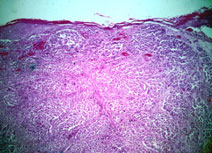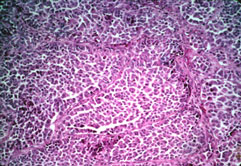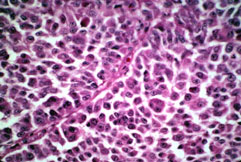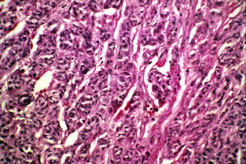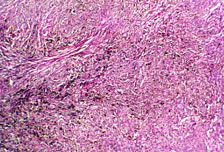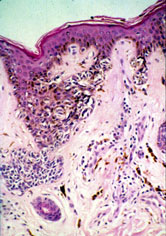|
87. SKIN: MALIGNANT MELANOMA
PERTINENT CHANGES:
Large masses of tumor cells replace and distort normal architecture.
These cells
- Are heavily pigmented in some areas, much less so in others.
- Have a tendency to occur in small thecae.
- Adhere to each other poorly, if at all.
- Have large, heterogeneous, hyperchromatic atypical nuclei with prominent magenta nucleoli.
Similar appearing cells are occasionally present in junctional nests and in the stratum basalis of the epidermis overlying the tumor.
There is no significant lymphocytic infiltrate associated with this tumor.
In places, a thickened stratum malpighii and granulosum and markedly thickened and condensed stratum corneum identify this as volar skin. |
